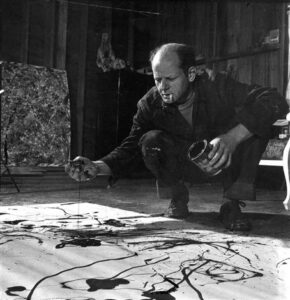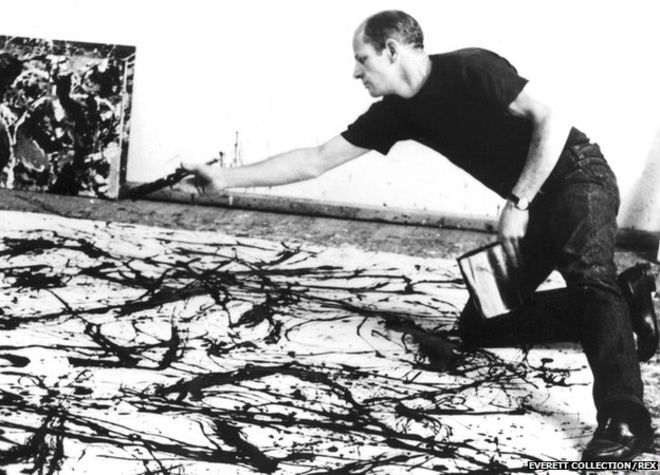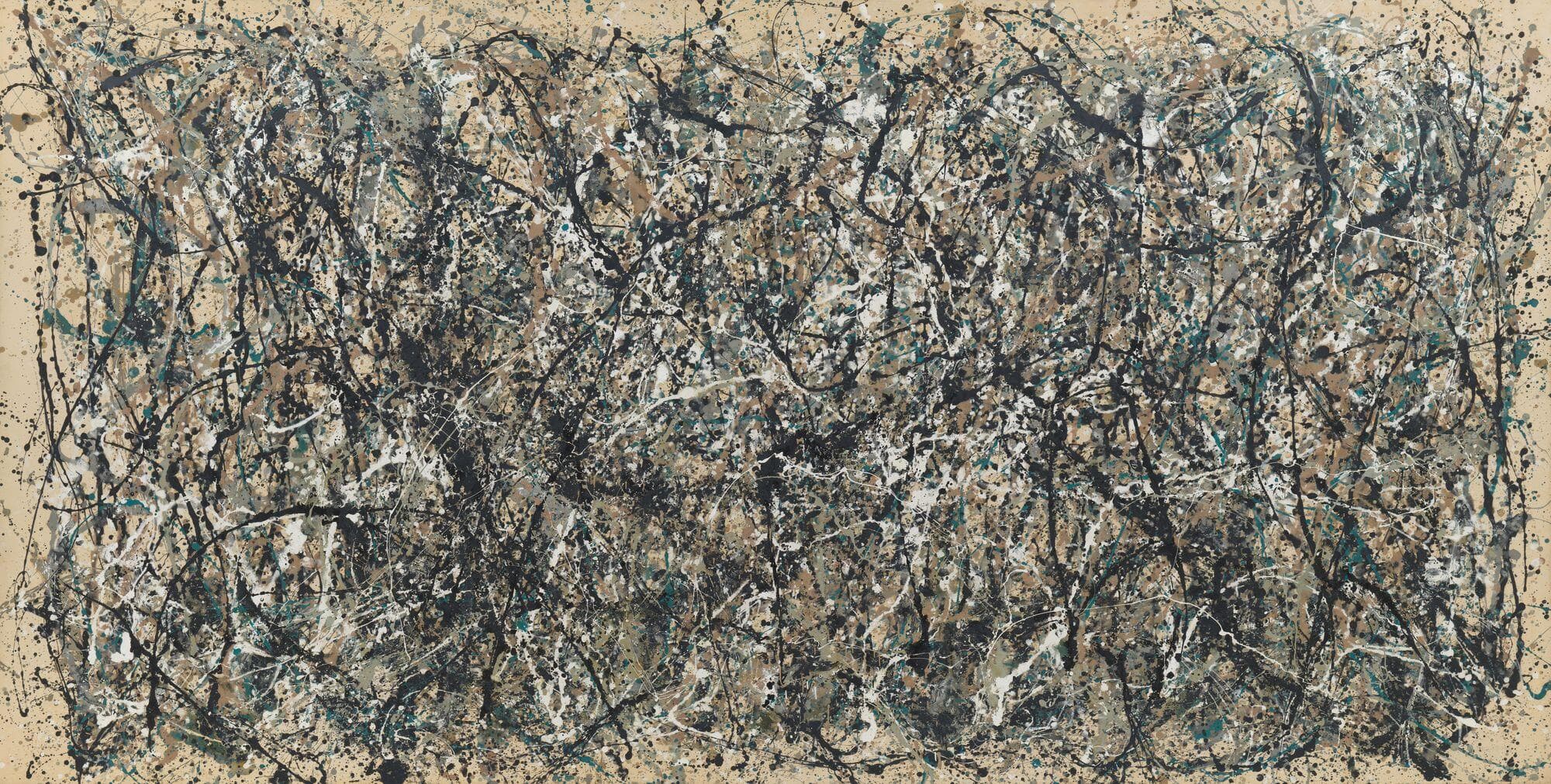This painting is not a big favourite of mine, but it’s important to me because the work is unconventional and what it symbolises.
He’s famous because he’s so hyped; the market likes controversial groundbreakers, so he’s radical in one sense. He’s part of today’s love affair with creativity, newness, breaking with tradition, and the future. But he’s a poster boy of the establishment, a part of the art world yet lionised for rebelling against it, a paradox. Another thing is politics; it was a drive by the US to break with European art and found an American, capitalistic art and fight against communism.
It was of its time in the 50s and 60s when Buddhism, especially Zen, was becoming more popular, with authors like Alan Watts, Alan Ginsberg, and Jack Kerouac. People were looking for new ways to live in the toxic capitalistic society of the time. It was a period in history where traditions were being questioned, not least what art could be. They were letting go of the European hold on art.
The work is puzzling; there’s no focal point or object to look upon: a landscape, animal, or person. There are no objects, so it depicts nothing, no form to identify, no narrative to follow.
I like this work because it represents the unconventional. The Abstract Expressionists were reinventing what art could be by using new materials in new ways—here, working on the floor, using house paint or radiator paint, drawing splattering, drizzling with fluid paint.
Unlike representational art, Abstract art is more about the materials used than just the image created. Pollock spread the canvas out on the floor, dripping, splattering and throwing the paint onto the canvas. There’s even a short video that documents this. It’s, therefore, a record of motion.

What’s special when looking at it is the canvas is all treated equally. There’s no foreground or background relationship. No, up or down: it can be hung at any orientation. There’s no focal point where your eye can rest. It makes for a very unsettling work because your eye never stops, never ceases.
It reminds me of the imagery of Indras Net, it symbolises for me what Hindus and Buddhists talk about when describing the cosmos—an interconnected and interdependent reality in flux. Reality is empty of intrinsic, unchanging existence. In Buddhism, this is called Anatman, or Non-Self. later called Shunyata. There’s no idea of a soul or self in Buddhism; such statements and ideas are illusory.
There’s no clarity and no resolution to find in the piece. On the plus side, there’s no problem to fix either; a solution isn’t necessary. So you’re left looking at the work not in puzzle/problem-solving mode but as an experience to be felt. There’s also no suggestion in the work about the painting; it’s more of a record of Pollock’s movement. Works like this are called Action Painting because of this.
The painting is untitled, merely Number 31 because a title would be suggestive, drawing the viewer down a path of ideas and meaning. What we have is ambiguity; we’re left to our own devices. It draws in the viewer and invites a personal interpretation of the work. Another feature of his drip paintings is they follow the rules of fractal geometry. There’s the same pattern at every level you look at.
Effortless spontaneity is making without forethought or plan, and it’s revealed in this work. More figurative artists can only achieve this if they have to think about composition, shape, form, etc.
Another point about the piece is that if you take a passage or area, it’s not the same as another area, yet it is similar, same but not the same—a paradox.
We all live and work in well-worn ways. Abstract paintings like these offer a lesson by undermining conventions about Art and what it is supposed to be. The invitation is to do the same with our lives. Abstract asks us to know our expectations and what we want from Art. It challenges the idea that Art has to live up to our expectations and provide answers and clarity. In this way, it reminds me of a Zen Koan.
We can look upon abstract works and leave unsatisfied; our ego wants the Art to be agreeable, understandable, and accessible. But Art doesn’t have to make sense, and neither does life. Difficult Art like this asks us to reflect upon life similarly. To be more aware of our needs and expectations.
What I see in a work is the artistic capturing of actual existence. Life is uncertain, obscure, and unsettling. That makes drip paintings like these meaningful and relevant in a way many don’t see.
It’s an artwork about no-thing, which makes it an artwork about everything.


